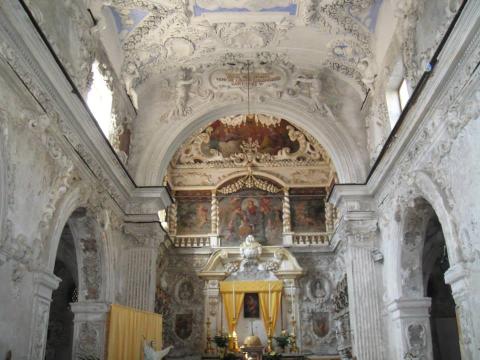The Church of the Madonna dell'Orto is a small masterpiece of Baroque architecture, on a late medieval, basilica-type architectural plan. Inside were valuable paintings, including the Guardian Angel by Pietro Novelli. The inlaid marble of the altars and the majolica floor still enrich the interior space. The church boasts an ancient and fascinating history. According to one tradition, in Norman times women of ill repute were detained in the garden after which it was named. A small chapel with an image of the Madonna appears to have existed in the enclosure wall, on which the present church was later built in 1619 with subsequent extensions and then entrusted by Venero to the learned canons of the Collegiate Church. At the end of the 18th century, the moralistic scruples of the time led the parish priest to cover up the nude images on the ceiling, deemed immoral and brought to light by a recent restoration.
The church is located in the Turbe district, developed in the 16th century in the upper part of the city. The area, which was in poor condition and isolated from the rest of the town due to its narrow, sloping streets, was named Turbeafter the word turbolenza or commotion. The archbishop and the praetor of the time had decided to move the large, needy families living around the cathedral to a space further north so that outsiders could visit the cathedral in peace. In the 17th century, the ringing of the large bell, given to the Capuchins for the monastery, with hourly chimes from three o'clock in the morning, contributed to the commotion within this district. This densely populated urban area had always suffered due to the lack of water. To eliminate the inconvenience and to prevent women from having to wander the still steep streets to draw water, Archbishop Testa had a fountain built there in the 18th century, of which only a votive aedicule remains today, in the nearby Via Miceli.
Credits: Arch. Paola La Scala
